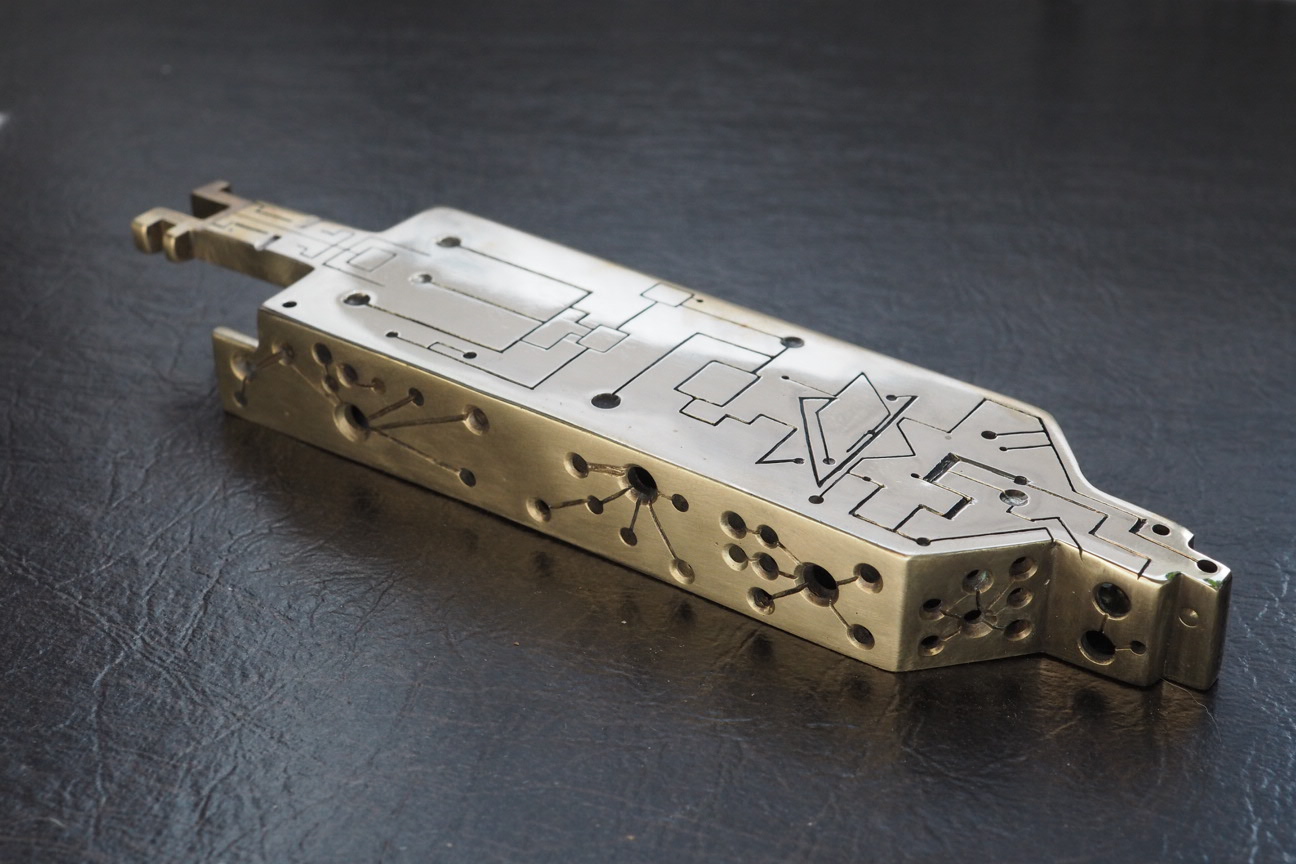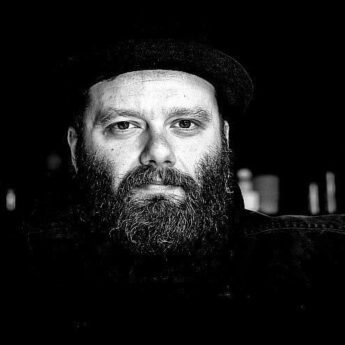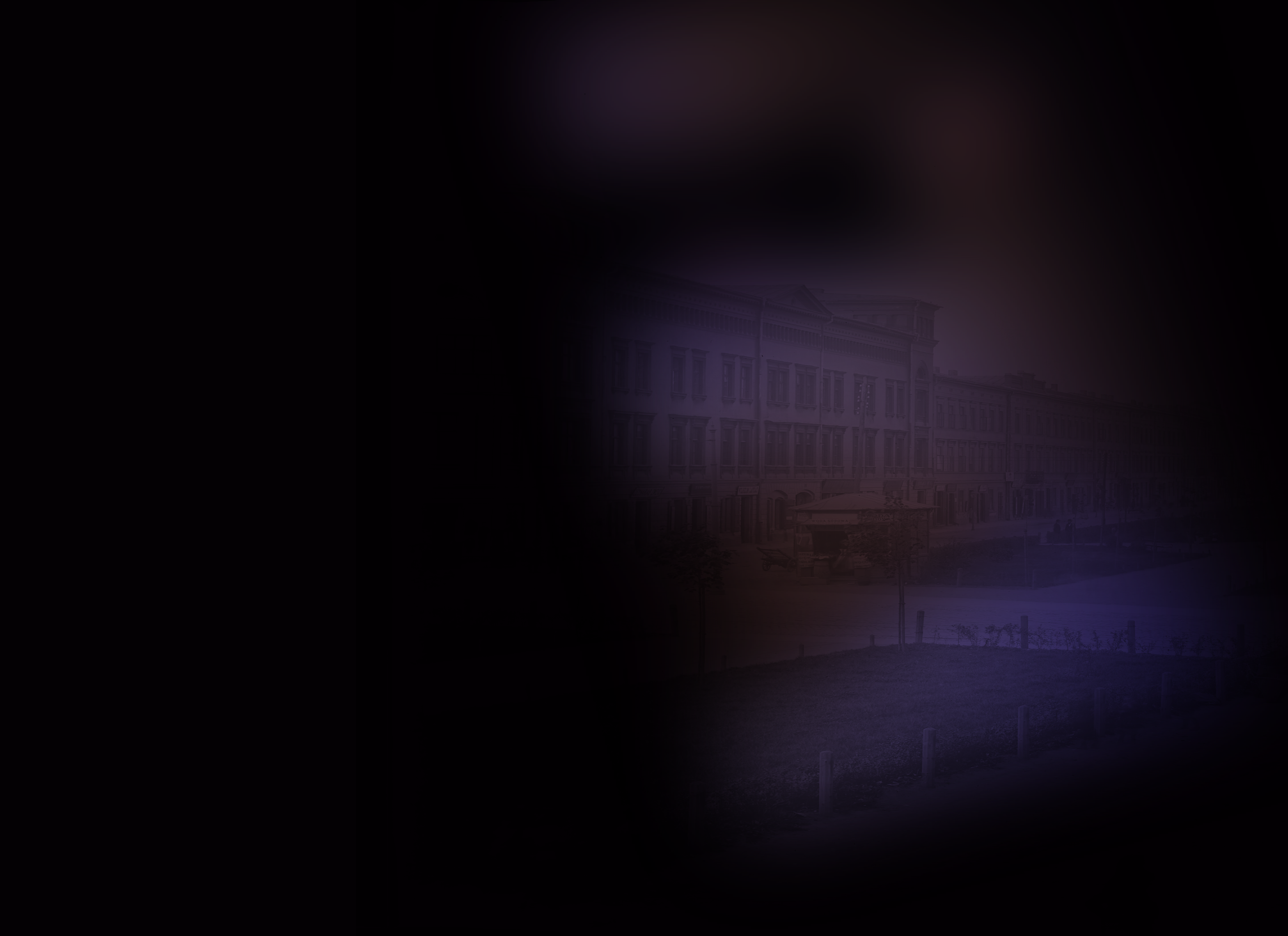Majk Hercberg Speaks: Insights from the Artist
How did your adventure with music begin?
How did your adventure with music begin?
I am curious about different artistic forms, I have been interested in many things since I was a child, I could play with a toy or a kitchen utensil in many different ways; my mother still says that I was a very creative child.
When it comes to music, at the beginning I listened to rock ballads, pop and classical music, but when I was 9-10 years old I fell in love with metal – thanks to my music teacher A. Sęk. He taught me my first guitar chords and also singing. I founded my first band in elementary school, where I sang and recited poems; in high school my adventure with the bass guitar began. It was a great time to learn about music. I played in rock and metal bands for a long time, almost a quarter of a century.
I never limited myself, I didn’t like to be pigeonholed. Hence my love for blues, folk and klezmer music, which I once played with Maciej Hen. In the 1990s, the Jewish community in Poland was experiencing its “renaissance” after the communist period, and there was a lack of Jewish music and culture in the community. Maciej invited me and people from Jewish organizations (PUSŻ and GWŻ in Warsaw, but not only) who were musically talented to cooperate. That is how the band was formed under the working name of Tizmoret. We played not only klezmer standards, but also songs by famous people with Jewish roots, such as Leonard Cohen. It was a very nice time.

And what about other areas of art – photography and sculpture?
My adventure with art began when I was a young boy, sitting with my friends on benches in a park in Mokotów. There I happened to meet Kazimierz Wolski, the owner of a photographic workshop called Sun-Box. He needed young people willing to work, so I helped him make lamps and elements of photo studio equipment. I cut metal sheets, soldered, glued elements, etc. There I also met another person: the sculptor Wojtek Józefowicz, a very positive person who changed my life.
Wojtek invited everyone to the opening of his studio at Pola Mokotowskie, behind the National Library. He helped me rebuild the bass guitar – at that time I was very involved in the Warsaw metalcore scene, I played in up to six bands at the same time, woodworking was foreign to me. After 10 years there, I learned everything, especially how to think about form and be open to experimenting with materials. Skills are something you acquire over time, they can always be acquired if you are curious.
I didn’t go to art school – if I didn’t know how to work with a certain material and I got a commission, I taught myself. School is not necessary to become an artist, this is what life has taught me and this is my nature: a rebel by choice. I never liked sitting at a desk and listening to boring lectures, practice and action are much closer to me.
Do you see being an artist as a profession or a passion?
Being an artist is a passion that may or may not turn into a profession after many years. My time came when I combined creative thinking with financial thinking and started designing artistic jewelry under the trivial name MajkArt.
I built my first goldsmith’s workshop myself – it was in a sliding wardrobe in my room. 14 meters in the Mokotów district of Warsaw: I spent many hours there and gave my first collection of jewelry to friends and acquaintances. That’s how the news spread that I was making custom-made jewelry.
Later, the Jewish Community in Warsaw provided me with a small office at ul. Kłopotowskiego, at the back of the former mikveh building, which now houses the Jacek Kuroń Multicultural High School of Humanities.
Two years ago I had the idea to do something I’ve always wanted to try – graphic design. I don’t need a studio, I can do it anywhere. All I really need is something to write on, something to draw on, a piece of paper and – more recently – a charged tablet. Years later, it turned out that I was more of a soloist professionally, so this form – me and a blank sheet of paper – creates nice, stress-free conditions for me.
After so many years of active public speaking, appearing on stage is stressful for me, even in the company of people close to me. This artistic “profession” could sometimes be a real profession. I have weak references from the so-called “industry”, which has often proven to be selfish and closed to others and the world. I had my five minutes on TV, I don’t like to be there and “celebrate” anymore.
I have always liked to make people happy with my activities. That’s why I’ve been involved in designing engagement and wedding rings, for example. Engagements and weddings are very emotional moments in people’s lives, so when designing you have to be a bit of a psychologist, a bit of a friend, and sometimes show the determination of a school janitor!
Many times, when I had bad moments, I wanted to give up my projects and become a craftsman. Learn a trade. But these thoughts passed quickly.
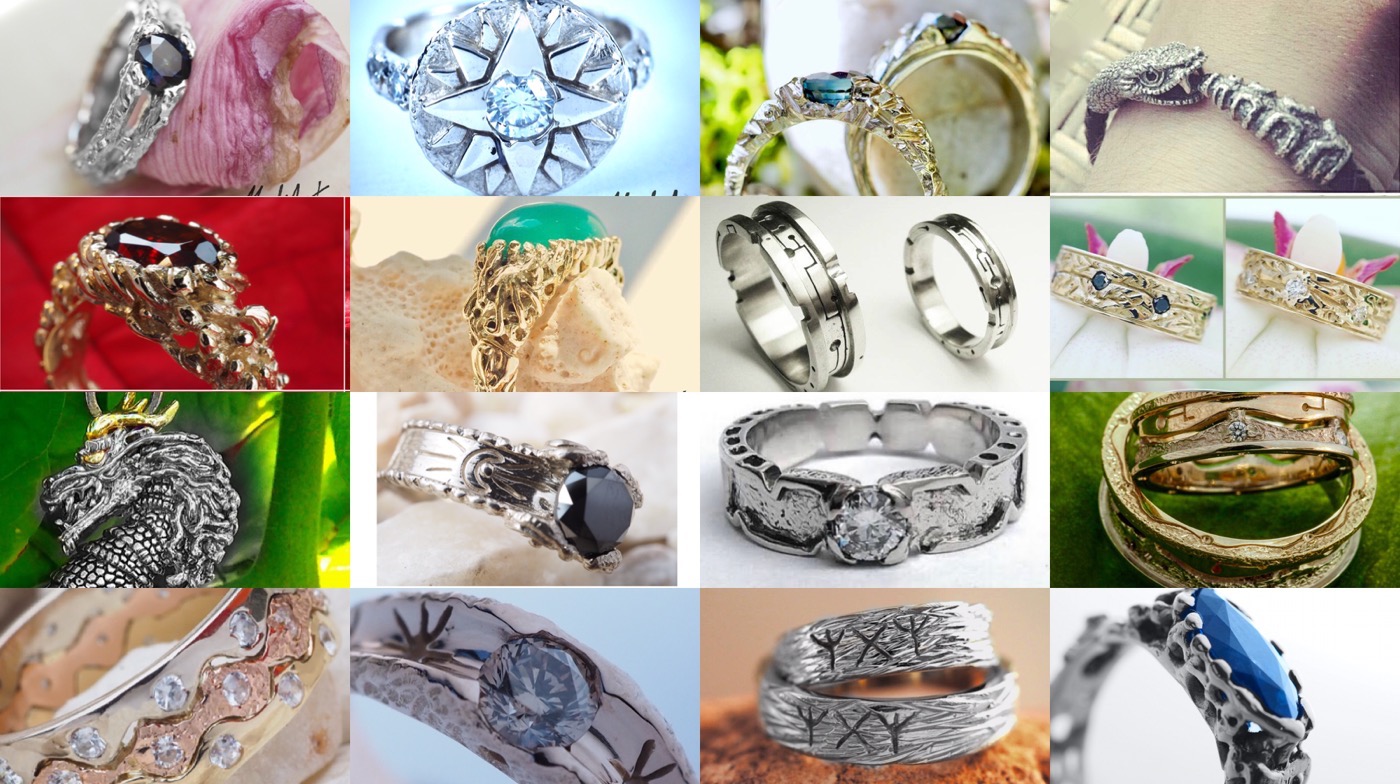
What role does the question of identity play in your history and creative work?
My grandparents, my father and my grandmother’s sister were the only ones to survive the Holocaust. The rest of my family died in Treblinka. My father was born in 1943, he was in the ghetto for a short time with his grandmother Hercberg’s family, so he was a child of the Holocaust. My mother, on the other hand, actually grew up in a foster home. With roots like that, I don’t have a big family. There was never much financial support, but emotional support, yes.
While making jewelry and researching roots, I decided that since I was financially stable – as an atheist, not a believer – I could devote part of myself to Jewish culture.
My exposure to the Jewish tradition began at the age of 15, when I learned about my heritage. Until then, I had been raised as a non-practicing Catholic. Rather, for pragmatic reasons and due to war experiences – it saved my grandmother’s life. Baptism and First Holy Communion were like a smokescreen. After this second sacrament, I gave up going to church and religion classes.
I found out about my origins by chance, during the holidays, in a Jewish colony for children and youth in Śródborów near Otwock, where Jewish life was very rich before the war. My parents sent me there because after I was expelled from the scout camp (for disobedience) they had nothing to do with me during the holidays.
On my first day in Srodborów, I thought that since scouts often play Vikings or Persians, they must also play Jews – that’s why everyone here talks about the Sabbath. Finally, I asked the kids what was going on – that’s how I found out that I was in the Jewish community and that I had Jewish roots.
When I asked my grandmother why she hadn’t told me sooner, I was told that she didn’t know how to present that side of my identity to me – so she sent me to camp to find out for myself.
As a teenager, I joined the Polish Union of Jewish Students (PUSŻ) – I traveled a lot, got to know the customs and culture, and was completely new to it. During this time I met Karina Sokołowska from the Joint Distribution Committee Poland Foundation and Michael Schudrich, the Chief Rabbi of Poland since 2004. He even wanted to send me to Israel, to the yeshiva, but at that time I was listening to black metal and had no plans to become an Orthodox Jew.
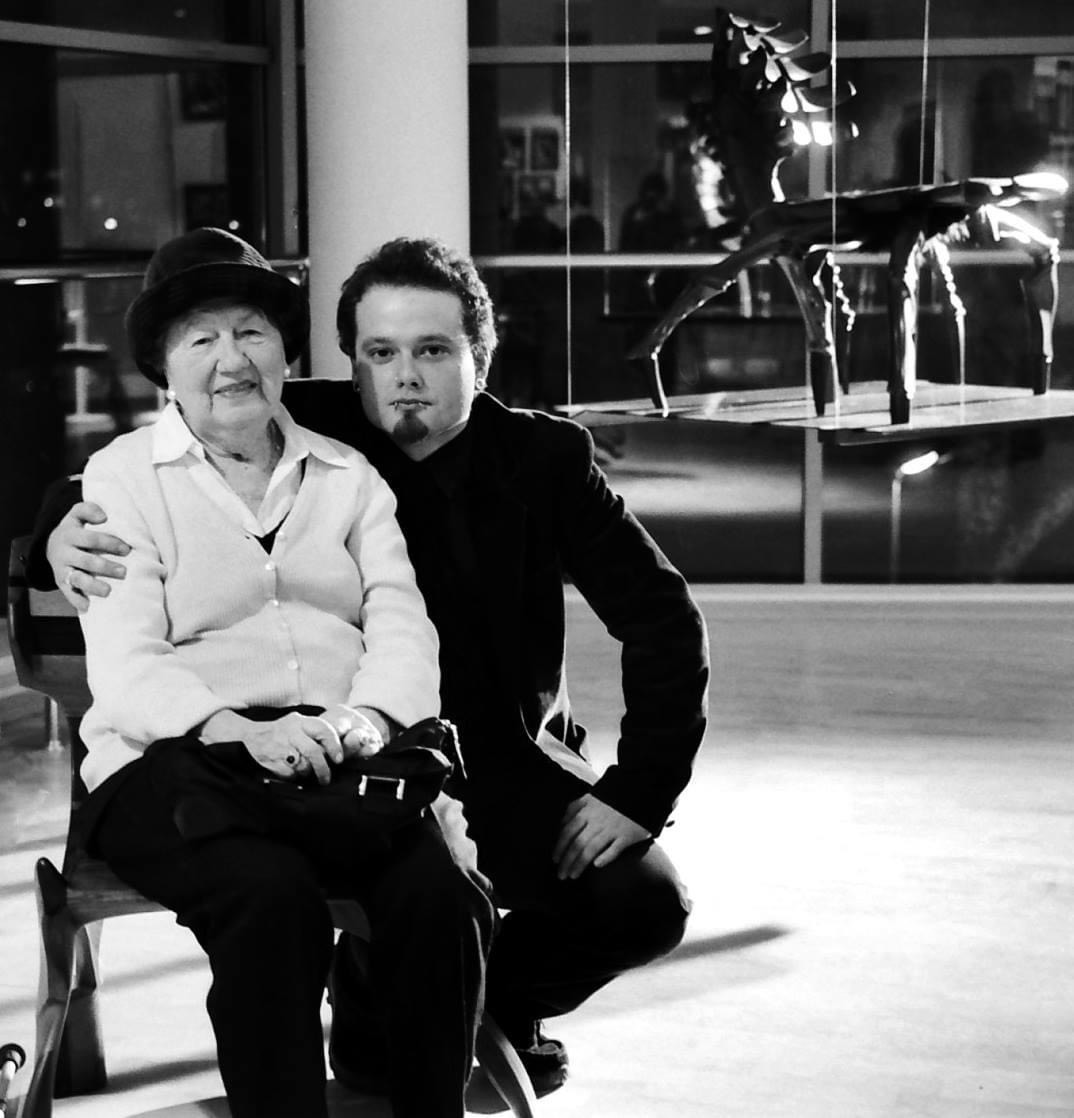
Has this awareness changed the way you think about yourself?
I didn’t know what to do, how to live my identity, in which direction to go. I am not Catholic, in spite of my tradition and upbringing. Judaism is not my way either. I learned about Jewish tradition and culture, and in this respect I feel more like a Jew than a Pole, i.e. a citizen of the world, although I was raised as a Polish patriot. But such a split is normal for Gemini. Although I have Polish citizenship and a Polish passport, when someone asks me who I consider myself to be, I answer that I am a European. I think it’s a cool answer.
I have often wondered how to approach the subject of my Jewishness.
Did you come up with anything?
I found the answer in Judaica. I don’t have to talk about it [my Judaism], I can do something with it. I sold small Stars of David, menorahs and silver mezuzahs online and at the Purim fair at the Warsaw JCC. I also designed and made mezuzah boxes, some of which I sold abroad. In 2012, Karina Sokołowska invited me to decorate the space of the Isaac Synagogue during the festival Synagogues at Night: 7@nite. My installation was seen by thousands of people. I wasn’t there, you could say I just looked at it. I usually show documentation of the creative process (photos), but I do not appear personally at my openings. I am mainly interested in the creative process and the contact with the material.
After the mezuzahs (the Doors Open “MezuzaH” exhibit), menorahs were supposed to be next, but that is a big, expensive project. I haven’t been able to do it yet due to financial constraints. Maybe it will be possible in the future, maybe someone will be willing to help, read this interview!

Do you ever work with other people from the broader Jewish culture?
The cooperation and presence of Jewish artists in my life began only recently. In April 2023, on the anniversary of the outbreak of the Warsaw Ghetto Uprising, I took part in the artistic activity of Zuzanna Hertzberg (The Heroism of Life Itself. Another Side of the Monument), which consisted in the ceremonial unveiling and commemoration of the second side – dedicated to civilians – of the Monument to the Heroes of the Ghetto in Warsaw.
I recently signed up for a woodcut workshop with Helena Czernek, and I’m very excited about it.
Do you do this type of activity often?
For some time now, my attention has been drawn to the historical aspect of Jewish culture and Jewish artistic activity. I used to run away from it, I wanted to create new things and not focus on the past, which is very sad and full of suffering. But recent events show that people easily forget what once happened. And we have to remember and explain it. It is only now that I have begun to understand, before I was running away from the category of “Jew”: Jew” and difficult family histories – mine and many of ours.

What would you most like to do in the future?
In the middle of the year, if successful, I plan to open a Judaica company, specifically jewelry. I have already created many designs of prototypes of mothers, in terms of design it will be beautiful, dark and sentimental. I’ve been thinking and talking about this for a long time, so there are expectations!
I will no longer be making the jewelry myself, but I will be managing the entire process, designing and organizing the work. Design is now the subject of my thoughts and the way to realize my dreams.
When it comes to graphic activities, I would like to do something that refers to the problem of antisemitism in public space. So much has accumulated that we need to intervene and pursue the matter further.
These things come to me on their own – in reality and lately in dreams. The end of 2023 and the beginning of 2024 have brought us a lot in the public and media space, maybe it is worth taking care of it.
So far I have been entertaining people, making them feel euphoric – either by playing music or doing things that make them happy. Recently I thought that I’ve already given a lot of positive energy, a lot of laughter, maybe it’s time to show people what’s going on around them and to pay attention to things that remind them of the 1930s.
